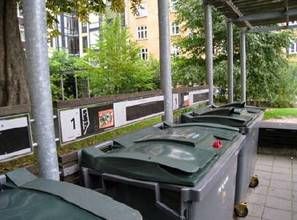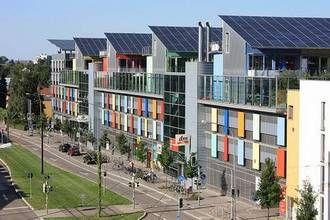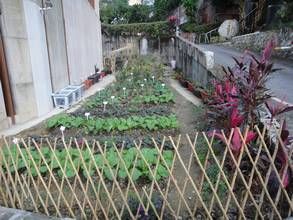
Eco-city needs perfect planning and various strategies to achieve the goal of sustainable development.
Establish a Sustainable Ecological City
Whether now or in the future, the direction of urban development should be based on the concept of "eco-city." We should reduce the reliance on non-renewable energy sources such as coal, oil, natural gas, nuclear fuel, minerals and so on, and gradually plan cities toward a more convenient, healthy and biodiversity direction, so that cities and nature can co-exist.
Conservation of resources is the primary goal of sustainable cities. Therefore, the development and utilization of resources should not only consider the needs of today's economic activities, but also allocate the limited resources to all generations fairly and equitably from a cross-generational perspective.
Strategy 1:
To prevent urban activities on the global environment damage through urban legislation.
Strategy 2:
Formulate appropriate urban development policies to address the global environmental change so as to avoid unnecessary restrictions and harms on urban development caused by changes in the global environment.
Strategy 3:
With a cross-generation perspective, formulate urban development policies, and then plan and manage the development of urban land.
Strategy 4:
Protect resources that can not be understood and controlled in order to meet future needs.
Strategy 5:
To draw up environmentally sensitive areas as the basis for resource development and conservation and land planning and management.
Strategy 6:
Analysis the capacity of the various resource supply under urban environment system, as the basis for the control of urban growth.
Strategy 7:
Set a management approach on resource development and utilization, in order to effectively use the resources.

Eco-city needs perfect planning and various strategies to achieve the goal of sustainable development.
To achieve sustainability in urban areas, "mininum waste" is a striving direction. Bringing an efficient material recovery mechanism into the natural ecosystem and changing the mass of waste generated by traditional mass production completely neglect the producer's responsibility for waste generation.
Strategy 1:
Encourage the reuse of recyclable and compostable materials.
Strategy 2:
Reward the designs, which focus on enhancing durability and resilience to achieve the effect of garbage reduction.
Strategy 3:
Use wetlands to purify non-point source pollution.
Strategy 4:
Apply uutrient recycling and reuse ideas on compost and dispose of organic waste.
Strategy 5:
Perfect waste recycling and classification system.
Strategy 6:
Rationally allocate different activities and facilities of the location to reduce unnecessary commuting and shopping, and achieve the goal of reducing air pollution and energy consumption in urban areas.
Strategy 7:
Suppress individual transportand improve mass transit systems to reduce energy consumption.
Strategy 8:
Improve personal travel habits, reduce the use of motor vehicles, increase the service facilities of the pedestrian system and reduce the number of motor vehicle trips.

For example, communities set up recycle bins and educated community residents on how to classify them.
Urban systems should also actively engage in proper environmental management, strengthen the foundation of natural resources and upgrade the service functions of subsistence so as to promote the sustainability of economic development and the more efficient use of resources in cities.
Strategy 1:
Rebuild the over-developed urban and suburban manufacturing ecosystem, and renew self-design function.
Strategy 2:
Pomote the development of a resource-producing metropolitan ecosystem and strengthen pollution prevention and control tough economic incentives and legislative control.
Strategy 3:
Strengthen the urban periphery, protected areas, species and the definition and establishment of gene data bank, in order to ensure species diversity.
Strategy 4:
To strengthen its own renewable resources development and utilization, such as: water, solar energy, wind and geothermal, in order to reduce dependence on fossil fuels.
Strategy 5:
Improve the efficiency of energy use, energy production and energy distribution and reduce the demand for energy and raw materials.

Eco-city needs the proper planning of the government in order to achieve the goal of ecological sustainability. For example, using buildings to develop renewable energy.
As the economy grows, a large number of people gather in highly urban and industrialized areas. The natural environment in highly developed areas is subject to great development pressure. In areas with relatively slow development, local industries are relocated and large numbers of people are migrated out. Therefore, it is an important task to promote the sustainable development of cities by thickly planting local industries, rejuvenating their local industries and building their own natural resource base.
Strategy 1:
Investigate, log in and establish a database of Taiwan's environmental resources to assess the local resource base and characteristics.
Strategy 2:
To formulate a reasonable industrial development policy, properly plan the distribution and scale of industries so that they have a foundation of existing local resources.
Strategy 3:
Raise the level of professional and technical labor ability to enhance economic productivity.
Strategy 4:
Strengthen the integration of science and technology industry and research and development work, promote industrial restructuring and enhance economic development.
Strategy 5:
To formulate an ecological-based agricultural development policy to control and manage the use of fine farmland and upgrade production technologies.

Planning for eco-city requires the government and citizens to work together,
for example, effectively use community land to design farmland for residents to plant.
Apart from nature conservation, waste reduction and consumption reduction, the strengthening of the natural resource base and local industries, we should also consider how to effectively improve the quality of local living environment with existing resources.
Strategy 1:
To strengthen the feedback from urban economic system to rural areas, to improve the life quality in rural areas, and to promote the symbiotic symbiosis between cities and rural areas.
Strategy 2:
To increase government spending on public places to enhance the local standard of living.
Strategy 3:
To set reasonable population growth targets based on resilience of ecosystems and man-made facilities, such as waste treatment facilities, so that the growth of the urban population can be limited by supply-side constraints.
Strategy 4:
To promote a balanced population distribution by reviewing population policies, so as to reduce the problems caused by over-concentration of population.
Strategy 5:
To change personal habits, such as reducing personal consumption of resources and energy, and to ease the environmental damage caused by resource needs.

In addition to emphasizing the coexistence of man and nature, eco-cities also emphasize on creating a suitable living environment for human beings. For example, use landfill and abandoned earth to design eco-park.
Reference:
Huang Shuli, 2001, Sustainable Urban Development and Eco-city Construction, National Science Council of the Executive Yuan Project Research Project Achievement Report.
Images from:
Zhang Yulong and Xie Mincheng, ecodesign Principles, ecology, architecture, energy efficiency and renewable Energy Community Design Case in Denmark and Germany, Urban Development Bureau of Taipei City Government, 2008.
Regional Development Institute, Research Center for Regional Economic and Metropolitan Development of National Kaohsiung University, Case Study on Entrusted Professional Services for Eco-city Urban Design and Operation Manual, Construction and Planning Department, Ministry of the Interior, 2010.
- Top -
© Copyright 2018 Taipei Municipal Daan Elementary School - All Rights Reserved